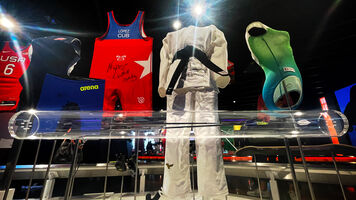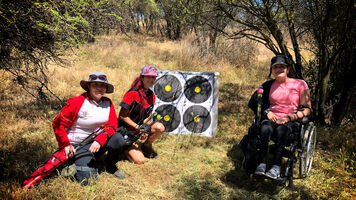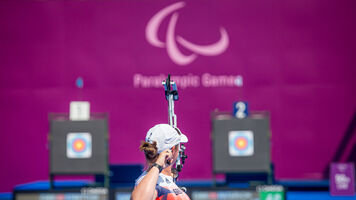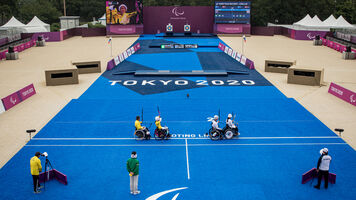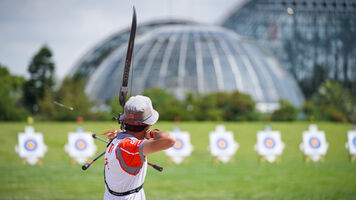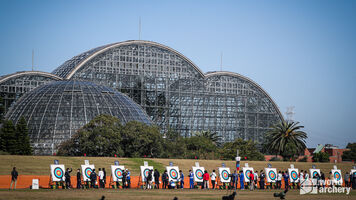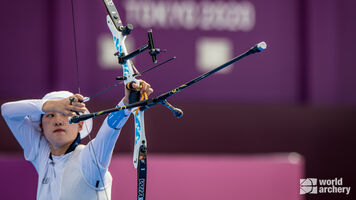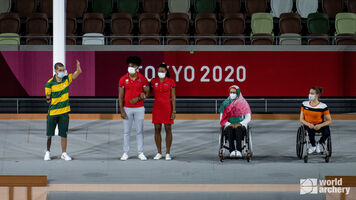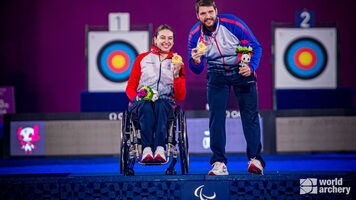Beginners guide to archery at the Tokyo 2020 Paralympic Games
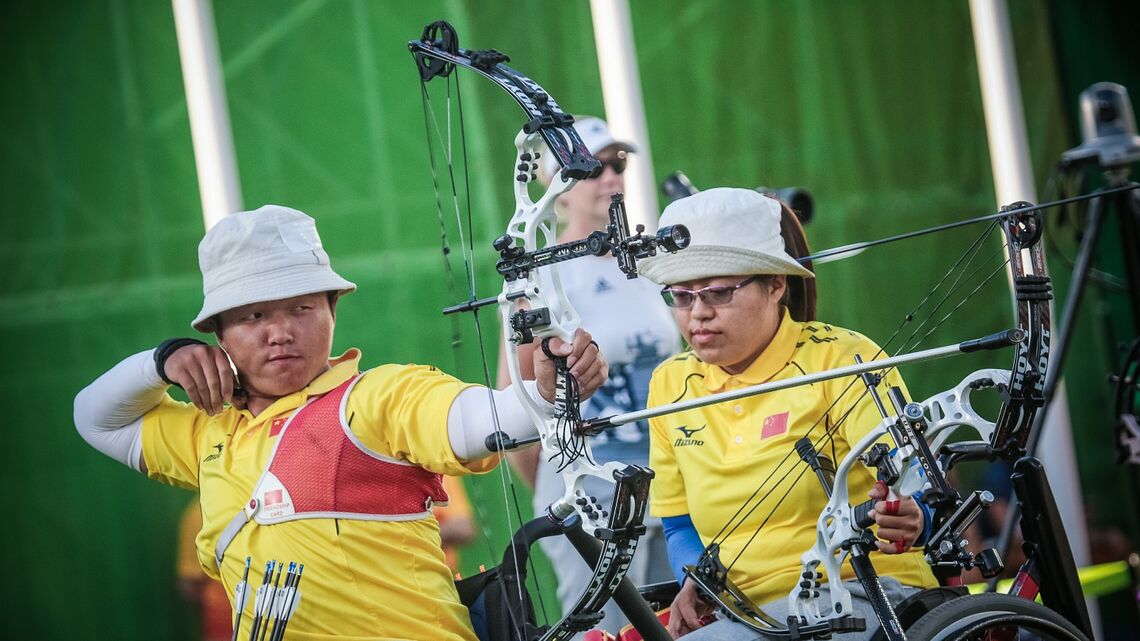
Tokyo is about to host the largest and most diverse archery competition in the sport’s long Paralympic history.
Despite the pandemic, cancelled or delayed qualifying events, and myriad travel restrictions, 140 para athletes from 42 countries will compete for nine Paralympic gold medals in the archery arena at Yumenoshima Park, the very same venue that was just used for the Olympics.
Zahra Nemati, Matt Stutzman, Jess Stretton and David Drahoninsky are among the sport’s biggest stars – and personalities – that will be taking part, alongside big contingents from China (13 athletes), RPC and Turkey (11 athletes).
Great Britain topped archery’s medal table at the last Paralympics in Rio, winning three golds and climbing the podium six times in total. But as the number of archers at the Games increases and as the number of countries with a world-class para programme grows – so does the competition standard on this elite stage.
One of the best things about archery is that it’s incredibly accessible – and athletes with a wide variety of impairments can compete together, at a very high level, on an even playing field.
Key information
What’s happening? The 2020 Paralympic Games on 27 August-4 September in Yumenoshima Park in Tokyo, Japan.
What’s at stake? Nine Paralympic Champion titles.
Who’s competing? A total of 140 athletes from 42 countries.
What’s the story? It might have been a challenging few years – but what a positive message this archery competition delivers, boasting the largest (by number of athletes) and most diverse (by number of countries) field in Paralympic history.
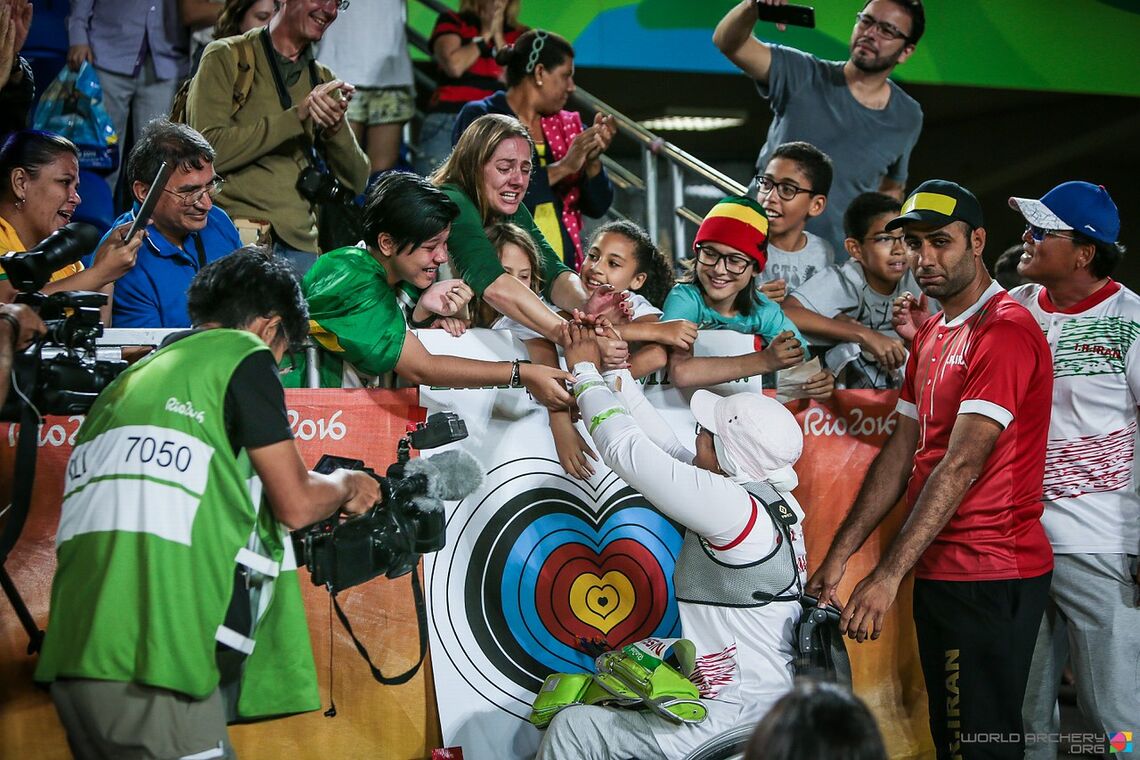
Defending champions
- Recurve open men: Gholamreza Rahimi, Iran
- Recurve open women: Zahra Nemati, Iran
- Recurve open mixed team: China
- Compound open men: Andre Shelby, USA
- Compound open women: Zhou Jiamin, China
- Compound open mixed team: China
- W1 men: John Walker, Great Britain
- W1 women: Jessica Stretton, Great Britain
- W1 mixed team: Great Britain
Schedule
- Friday 27 August – qualifying
- Saturday 28 August – W1 mixed team finals
- Sunday 29 August – Compound open mixed team finals
- Monday 30 August – Compound women open finals (morning), W1 men finals (afternoon)
- Tuesday 31 August – Compound men open finals (morning), W1 women finals (afternoon)
- Thursday 2 September – Recurve women open finals
- Friday 3 September – Recurve men open finals
- Saturday 4 September – Recurve open mixed team finals
Days in bold will be available live to international broadcasters.
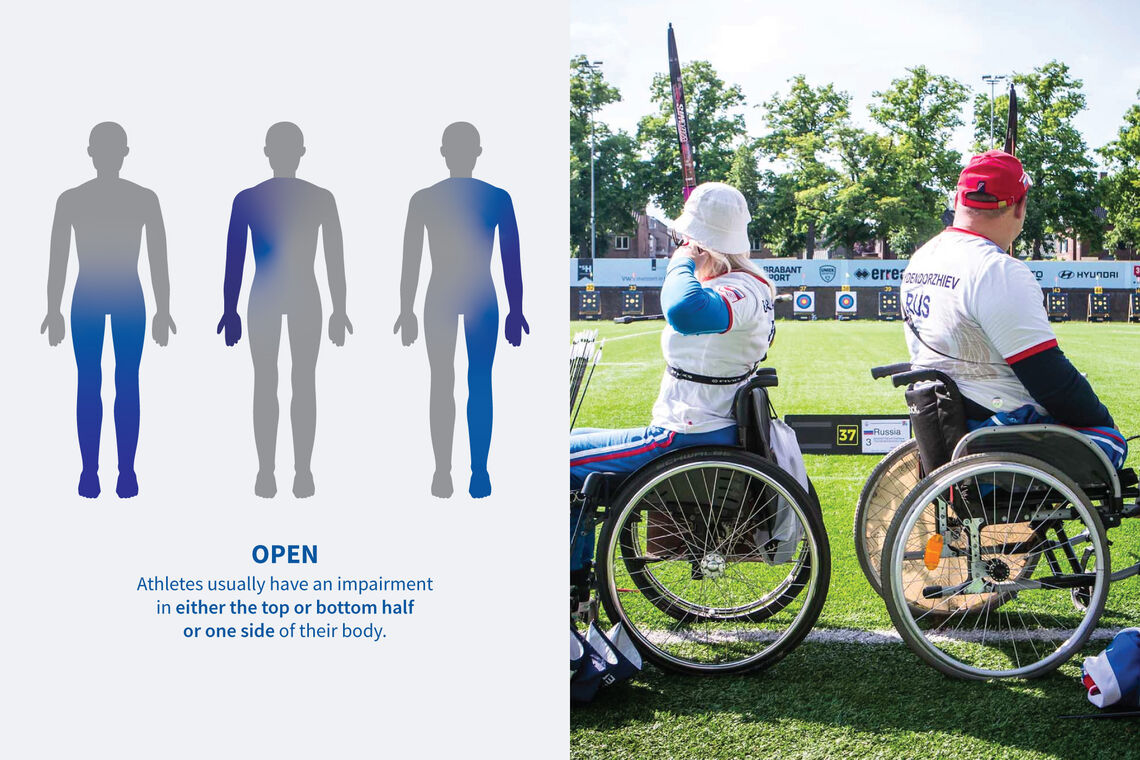
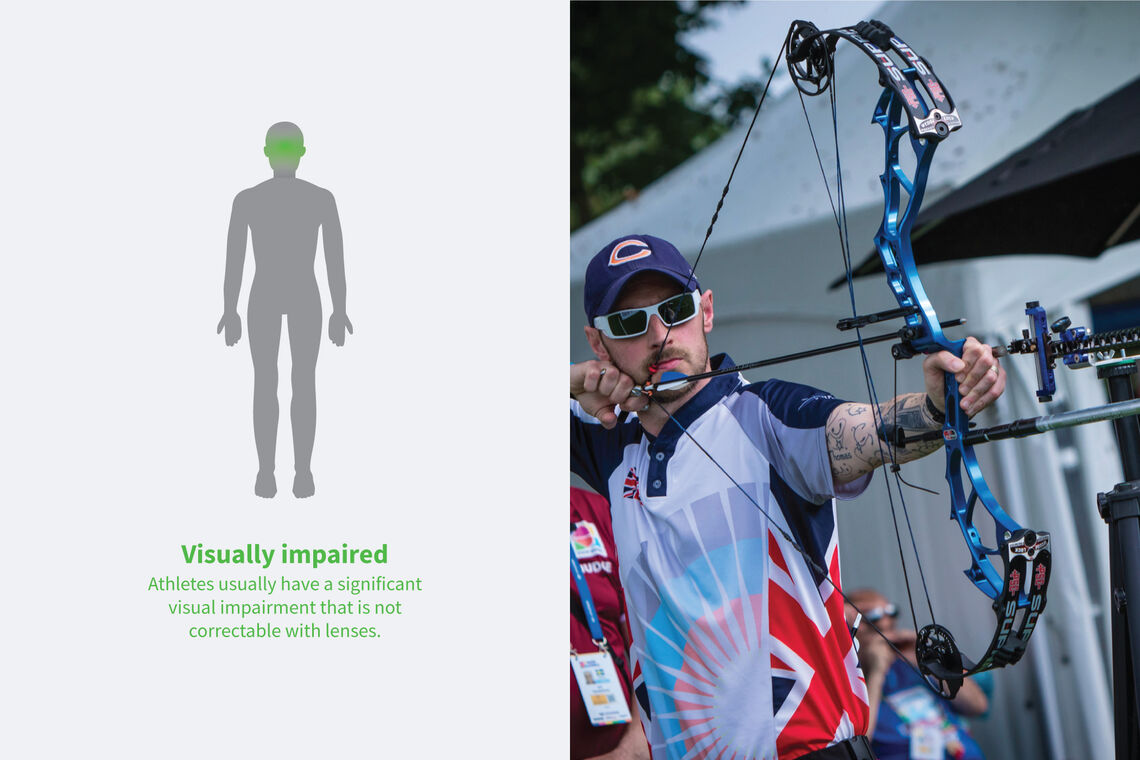
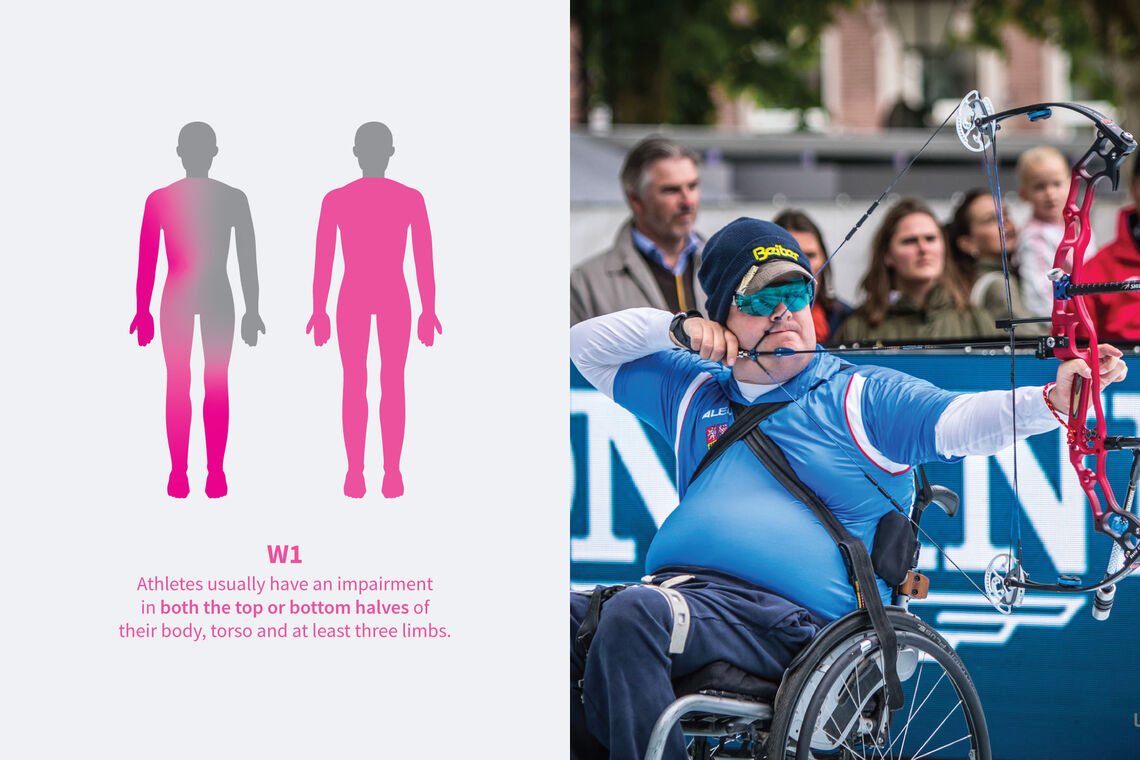
Classification and competition categories
Para archers are classified into one of two categories depending on their level of impairment: open or W1.
Athletes in the open category usually have an impairment in either the top or bottom half or one side of their bodies. Athletes in the W1 category usually have an impairment in the top and bottom halves of their bodies, torso and at least three limbs.
Classification assessments at the international level are carried out by trained classifiers – and also define which, if any, assistive devices a para archer can use. Assistive devices include custom release aids, stools or chairs, or other fixed additions that help create a level playing field.
Para archers with an open classification can compete with a recurve bow in the recurve open category and with a compound bow in the compound open category. Para archers with a W1 classification can compete in the W1 category with either a recurve or a compound bow with limitations on draw weight, a restriction on magnified sights and other changes to the standard rules.
Equipment
Archers at the Paralympic Games use recurve and compound bows.
Recurve bows are the modern evolution of traditional bows. The limbs curve away from the archer at the top and bottom of the bow, which is what gives the ‘re-curve’ its name. The bows feature sights and stabilisers that help the archer to aim and release an arrow accurately.
Compound bows use a system of pulleys and cables, making them a more mechanically efficient and inherently accurate type of bow. The strength required to pull the bow is at its maximum at the start of the process, decreasing the further the bow is drawn back, which makes it easier to hold while aiming. Archers use mechanical release aids and sights with magnified lenses to further increase accuracy.
Archers shooting in the W1 category may use either style of bow with limits on draw weight and accessories, including a ban on magnifying sights.
Many para archers make use of assistive devices, which are specified under their classification. The term covers everything from wheelchairs, stools and chairs to innovative types of release aids, which are sometimes shoulder-mounted, or mouth tabs that allow the archer to draw the bow with his teeth. Assistive devices level the competitive playing field across a wide variety of physical impairments, rather than giving any athlete an advantage.
Competition format
Archers at the Paralympic Games compete in the discipline of target archery.
The competition features individual and mixed team events. A mixed team consists of two archers, one man and one woman, from the same nation.
Nations must qualify quota places to compete at the Games, and only 140 quotas are available across the six individual categories. Any nation that has at least one man and one woman qualified in the same category is eligible for the mixed team event.
Archers in the recurve open category shoot over a distance of 70 metres at targets measuring 122 centimetres in diameter, aiming to hit a 10-ring measuring just 12.2 centimetres in diameter – or about the size of an orange. Recurve matches are decided using the set system.
Archers in the compound open and W1 categories shoot over a distance of 50 metres at targets measuring 80 centimetres in diameter, aiming to hit a 10-ring measuring just eight centimetres in diameter. The outer four rings of the target are removed for the compound open competition. Compound and W1 matches are decided using cumulative scoring.
The qualifying phase of the competition, which takes place on 27 August and consists of 72 arrows shot for cumulative score, is used to rank and then seed the archers for the matchplay phase. Archers and mixed teams then shoot through head-to-head brackets, in which the winner of each match advances and the loser is eliminated until a champion is crowned.
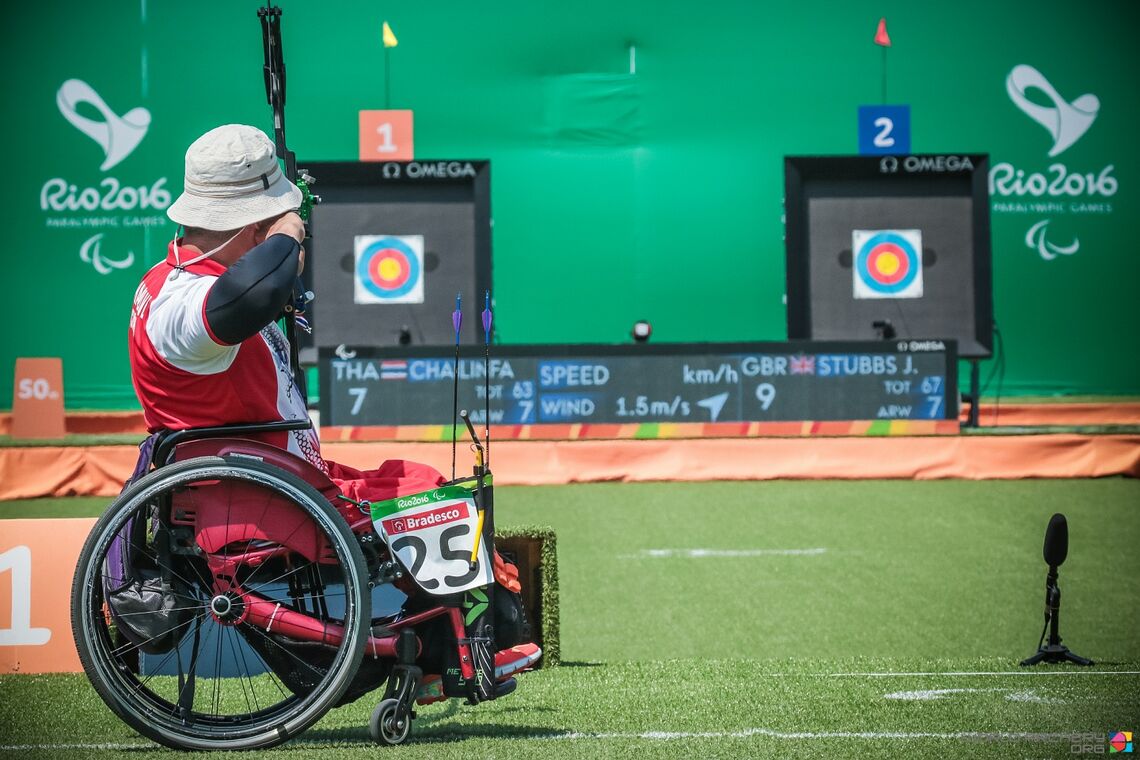
Set system
The goal of a match decided using the set system is to acquire a certain number of set points. In individual matches, which last about 15 minutes, the goal is six set points. In mixed team matches, which last around 20 minutes, the goal is five set points.
Each match is broken down into sets. At the end of each set, the archer or nation with the highest arrow score in the set is awarded two set points. Both archers or nations receive one set point if the arrow score is tied.
An individual set consists of three arrows – which are shot alternately – and the maximum score is 30 points. A mixed team set consists of four arrows, two per archer – which are shot in alternating rotations of two, one per archer – and the maximum score is 40 points.
An archer or nation can win a match quickly – with a score of 6-0 or in ‘straight sets’ – by winning three sets in a row.
If an individual match is tied at 5-5 after five sets or a mixed team match is tied at 4-4 after four sets, the match is sent to a tiebreak or shoot-off.
Each archer shoots an arrow. In an individual match, the archer whose arrow lands closest to the middle of the target wins the match. In a mixed team match, the nation that has the highest score with its two arrows wins the match but, if tied, victory goes to whichever nation has an arrow closer to the middle of the target.
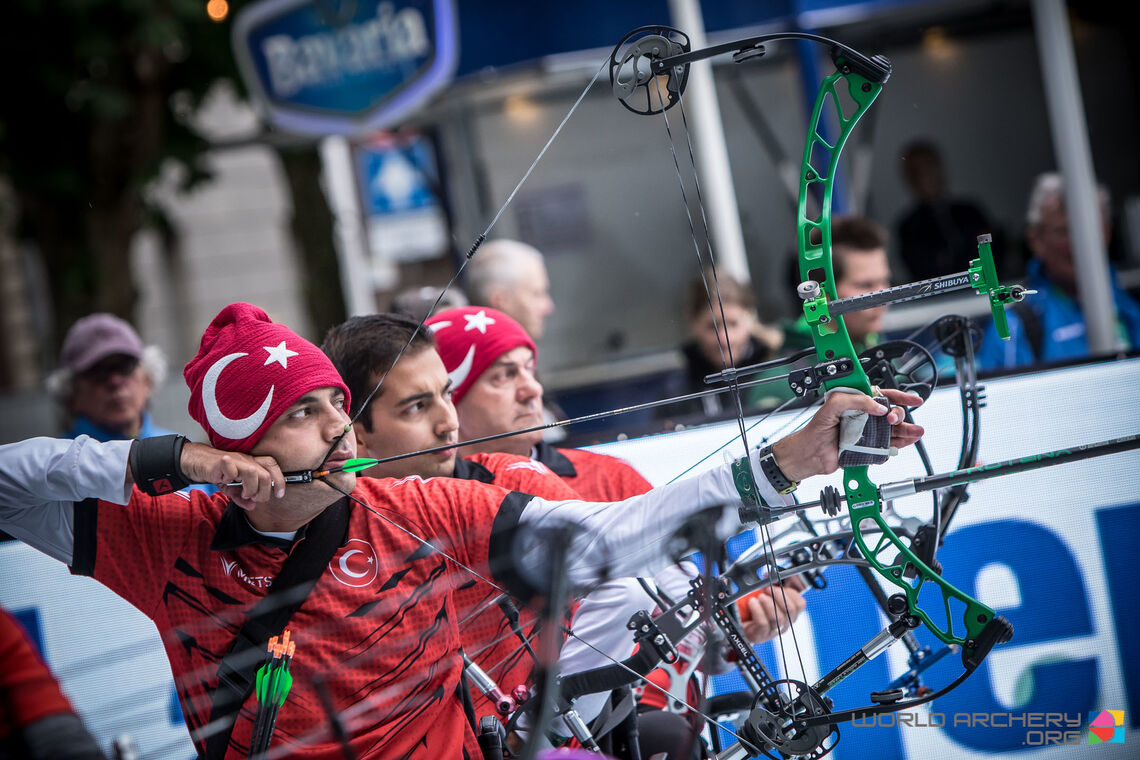
Cumulative scoring
The goal of a match decided using cumulative scoring is to acquire the most number of points over a certain number of arrows.
Individual matches last for 15 arrows and are split into five ends of three arrows. The maximum score is 150 points and each match takes about 15 minutes.
Mixed team matches last for 16 arrows and are split into four ends of four arrows, two per archer, which are shot in two rotations of two, one per archer. The maximum score is 160 points and each match takes about 20 minutes.
If a match is tied at the end of the regulation number of arrows then the match is sent to a tiebreak or shoot-off.
Each archer shoots an arrow. In an individual match, the archer whose arrow lands closest to the middle of the target wins the match. In a mixed team match, the nation that has the highest score with its two arrows wins the match but, if tied, victory goes to whichever nation has an arrow closer to the middle of the target.
The line-up
These are the nations that will contest each of the nine gold medals. The full entry list of athletes is available in the Tokyo 2020 Paralympic Games section of the World Archery website.
Recurve men open (32 athletes from 25 countries): Australia, Bhutan, Brazil, China, Czech Republic, France, Great Britain, Germany, India, Iran, Italy, Japan, Korea, Malaysia, Mexico, Mongolia, Poland, Romania, Slovakia, Slovenia, Sri Lanka, RPC, Thailand, Turkey and the USA.
Recurve women open (24 athletes from 19 countries): Australia, Brazil, China, Colombia, Great Britain, Greece, Iraq, Iran, Italy, Japan, Korea, Latvia, Mongolia, Poland, RPC, Thailand, Turkey, Ukraine and the USA.
Recurve open mixed team (13 countries): Australia, Brazil, China, Great Britain, Iran, Italy, Japan, Mongolia, Poland, RPC, Thailand, Turkey and the USA.
Compound men open: (36 athletes from 23 countries): Australia, Belgium, Brazil, China, Costa Rica, Finland, France, Great Britain, Hong Kong China, India, Iraq, Iran, Italy, Japan, Malaysia, Mexico, RPC, Slovakia, South Africa, Thailand, Turkey, Ukraine and the USA
Compound women open (24 athletes from 18 countries): Brazil, Canada, Chile, China, France, Great Britain, India, Iran, Ireland, Italy, Japan, Korea, RPC, Singapore, Spain, Sweden, Thailand and Turkey.
Compound open mixed team (11 countries): Brazil, China, France, Great Britain, India, Iran, Italy, Japan, RPC, Thailand and Turkey.
W1 men (12 athletes from 10 countries): Brazil, China, Czech Republic, Hungary, Iran, Japan, Korea, RPC, South Africa and Turkey.
W1 women (12 athletes from 10 countries): Brazil, China, Czech Republic, Great Britain, Italy, Japan, Korea, RPC, Turkey and the USA.
W1 mixed team (7 countries): Brazil, China, Czech Republic, Japan, Korea, RPC and Turkey.
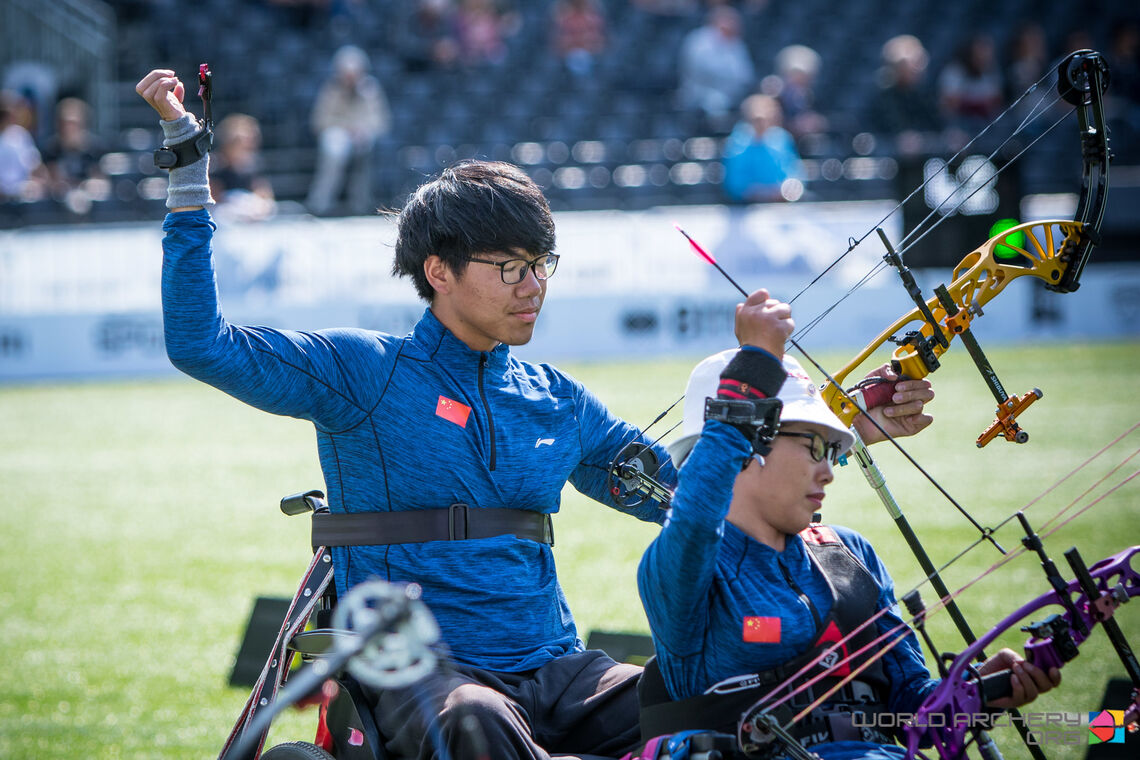
Trivia
There are (almost) no differences in the competition format between para and able-bodied archery competition. Impaired athletes can, and often do, compete in archery’s major international events, where they are also able to use the assistive devices permitted by their classification.
Archery is at the root of the Paralympic movement. The sport was used as a rehabilitation activity for spinal injury patients by Dr Ludwig Guttman, who started the Stoke Mandeville Games – which eventually became the Paralympic Games. Archery was featured on the programme of the first Paralympics in 1960 and has remained a part of the Games ever since.
Zahra Nemati is a back-to-back Paralympic Champion, having become the first female athlete from Iran to win individual gold at a Games in 2012 and then defending it in 2016. She is competing for her third straight title in Tokyo.
Probably the most well-known para archer is Matt Stutzman, who was recently featured in the film Rising Phoenix. Stutzman was born without arms and shoots his bow using his feet and a custom-made release aid, which straps around his torso and he triggers with his jaw.
The mixed team, which made its Olympic debut in Tokyo, first featured on the Paralympic programme in 2016.


